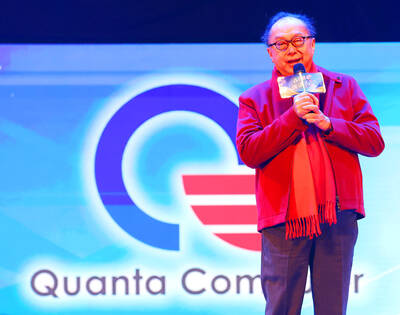Get ready to see more red warning signs online as Google Inc adds ammunition to its technological artillery for targeting devious schemes lurking on Web sites.
The latest weapon is aimed at Web sites riddled with “unwanted software” — a term that Google uses to describe secretly installed programs that can change a browser’s settings without a user’s permission.
Those revisions can unleash a siege of aggravating ads or redirect a browser’s users to search engines or other sites that they did not intend to visit.
Google had already deployed the warning system to alert users of its Chrome browser that they were about to enter a site distributing unwanted software.
The company just recently began to feed the security information into a broader “safe browsing” application that also works in Apple Inc’s Safari and Mozilla Corp’s Firefox browsers.
All told, the safe browsing application protects about 1.1 billion browser users, according to a blog post yesterday that Google timed to coincide with the 26th anniversary of the date when Tim Berners-Lee is widely credited for inventing the World Wide Web.
Microsoft’s Internet Explorer does not tap into Google’s free safe browsing application. Instead, Explorer depends on a similar warning system, the SmartScreen Filter.
Google yesterday said that the safe browsing application has been generating about 5 million warnings a day, a number likely to rise now that unwanted software is now part of the detection system.
As it is, Google says it discovers more than 50,000 malware-infected sites and more than 90,000 phishing sites per month.
The safe browsing application had gotten so effective at flagging malware and phishing that shysters are increasingly creating new unwanted software in an attempt to hoodwink people, Google product manager of safe browsing Stephan Somogyi said.
“The folks trying to make a buck off people are having to come up with new stuff and that puts us in a position where we have to innovate to keep pace with these guys,” Somogyi said.

Quanta Computer Inc (廣達) chairman Barry Lam (林百里) is expected to share his views about the artificial intelligence (AI) industry’s prospects during his speech at the company’s 37th anniversary ceremony, as AI servers have become a new growth engine for the equipment manufacturing service provider. Lam’s speech is much anticipated, as Quanta has risen as one of the world’s major AI server suppliers. The company reported a 30 percent year-on-year growth in consolidated revenue to NT$1.41 trillion (US$43.35 billion) last year, thanks to fast-growing demand for servers, especially those with AI capabilities. The company told investors in November last year that

Intel Corp has named Tasha Chuang (莊蓓瑜) to lead Intel Taiwan in a bid to reinforce relations between the company and its Taiwanese partners. The appointment of Chuang as general manager for Intel Taiwan takes effect on Thursday, the firm said in a statement yesterday. Chuang is to lead her team in Taiwan to pursue product development and sales growth in an effort to reinforce the company’s ties with its partners and clients, Intel said. Chuang was previously in charge of managing Intel’s ties with leading Taiwanese PC brand Asustek Computer Inc (華碩), which included helping Asustek strengthen its global businesses, the company

Taiwanese suppliers to Taiwan Semiconductor Manufacturing Co. (TSMC, 台積電) are expected to follow the contract chipmaker’s step to invest in the US, but their relocation may be seven to eight years away, Minister of Economic Affairs J.W. Kuo (郭智輝) said yesterday. When asked by opposition Chinese Nationalist Party (KMT) Legislator Niu Hsu-ting (牛煦庭) in the legislature about growing concerns that TSMC’s huge investments in the US will prompt its suppliers to follow suit, Kuo said based on the chipmaker’s current limited production volume, it is unlikely to lead its supply chain to go there for now. “Unless TSMC completes its planned six

Power supply and electronic components maker Delta Electronics Inc (台達電) yesterday said it plans to ship its new 1 megawatt charging systems for electric trucks and buses in the first half of next year at the earliest. The new charging piles, which deliver up to 1 megawatt of charging power, are designed for heavy-duty electric vehicles, and support a maximum current of 1,500 amperes and output of 1,250 volts, Delta said in a news release. “If everything goes smoothly, we could begin shipping those new charging systems as early as in the first half of next year,” a company official said. The new